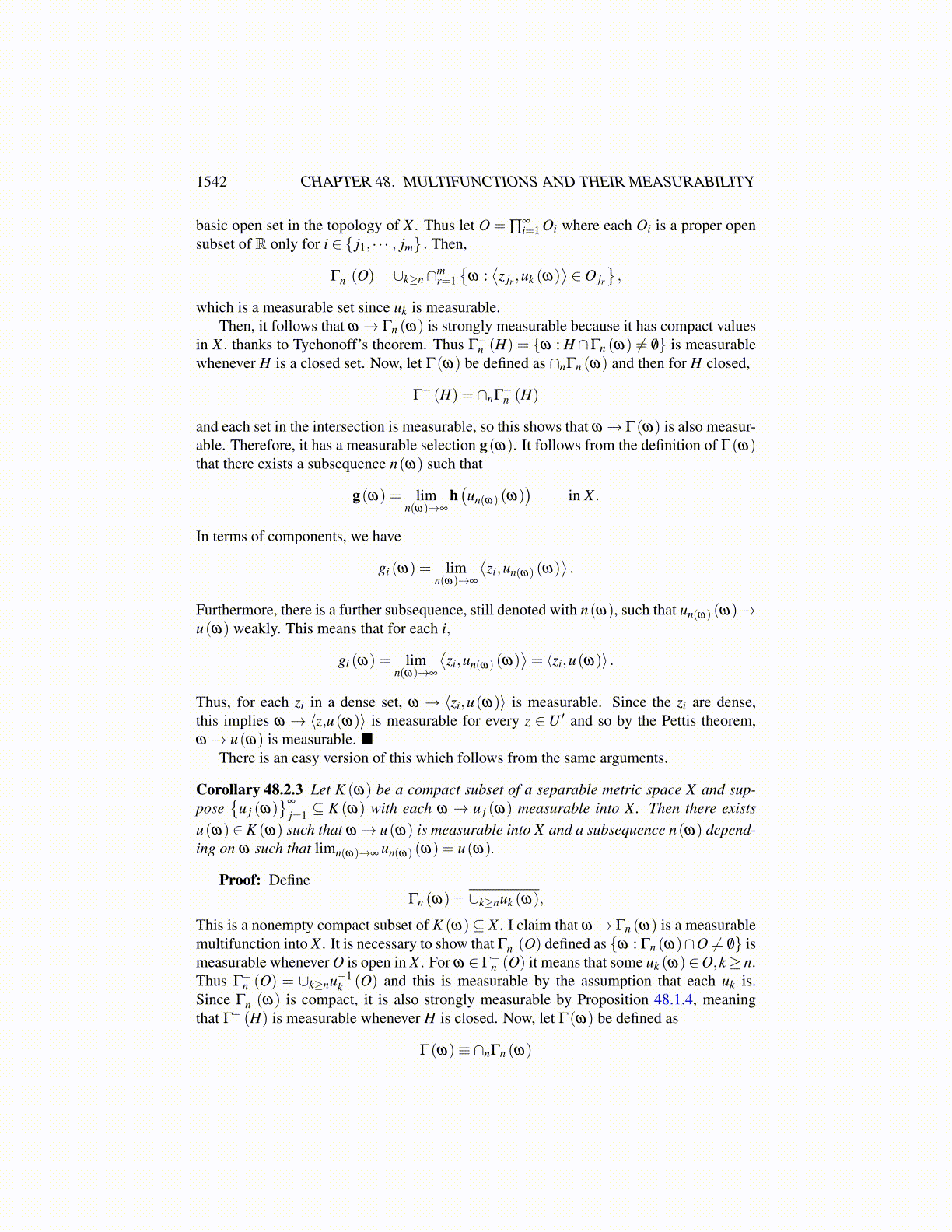
1542 CHAPTER 48. MULTIFUNCTIONS AND THEIR MEASURABILITY
this label. Thus there is either one route in to a simplex or two. Thus, starting at a simplexlabeled ∏i≤k+1 p ji one can cross faces having this value till one is led to the ∏i≤k+1 p jivalued simplex on the selected face of Ŝ. In other words, the process is one to one in se-lecting a ∏i≤k+1 p ji vertex from crossing such a vertex on the selected face of Ŝ. Continuedoing this, crossing a ∏i≤k+1 p ji simplex on the face of Ŝ which has not been crossed pre-viously. This identifies an odd number of simplices having value ∏
k+2i=1 p ji . These are the
ones which are “accessible” from the outside using this process. If there are any which arenot accessible from outside, applying the same process starting inside one of these, leadsto exactly one other inaccessible simplex with value ∏
k+2i=1 p ji . Hence these inaccessible
simplices occur in pairs and so there are an odd number of simplices in the triangulationhaving value ∏
k+2i=1 p ji . We refer to this procedure of labeling as Sperner’s lemma. The sys-
tem of labeling is well defined thanks to the assumption that {xk−x0}nk=1 is independent
which implies that {xk−xi}k ̸=i is also linearly independent. The following is a descriptionof the system of labeling the vertices.
Lemma 48.2.1 Let [x0, · · · ,xn] be an n simplex with {xk−x0}nk=1 independent, and let
the first n+ 1 primes be p0, p1, · · · , pn. Label xk as pk and consider a triangulation ofthis simplex. Labeling the vertices of this triangulation which occur on
[xk1 , · · · ,xks
]with
any of pk1 , · · · , pks , beginning with all 1 simplices[xk1 ,xk2
]and then 2 simplices and so
forth, there are an odd number of simplices[yk1 , · · · ,yks
]of the triangulation contained in[
xk1 , · · · ,xks
]which have value pk1 , · · · , pks . This for s = 1,2, · · · ,n.
Another way To Explain The Labeling
We now give a brief discussion of the system of labeling for Sperner’s lemma from thepoint of view of counting numbers of faces rather than obtaining them with an algorithm.Let p0, · · · , pn be the first n+ 1 prime numbers. All vertices of a simplex S = [x0, · · · ,xn]having {xk−x0}n
k=1 independent will be labeled with one of these primes. In particular,the vertex xk will be labeled as pk. The value of a simplex will be the product of its labels.Triangulate this S. Consider a 1 simplex coming from the original simplex
[xk1 ,xk2
], label
one end as pk1 and the other as pk2 . Then label all other vertices of this triangulationwhich occur on
[xk1 ,xk2
]either pk1 or pk2 . Then obviously there will be an odd number of
simplices in this triangulation having value pk1 pk2 , that is a pk1 at one end and a pk2 at theother. Suppose that the labeling has been done for all vertices of the triangulation whichare on
[x j1 , . . .x jk+1
], {
x j1 , . . .x jk+1
}⊆ {x0, . . .xn}
any k simplex for k≤ n−1, and there is an odd number of simplices from the triangulationhaving value equal to ∏
k+1i=1 p ji . Consider Ŝ ≡
[x j1 , . . .x jk+1 ,x jk+2
]. Then by induction,
there is an odd number of k simplices on the sth face[x j1 , . . . , x̂ js , · · · ,x jk+1
]having value ∏i̸=s p ji . In particular the face
[x j1 , . . . ,x jk+1 , x̂ jk+2
]has an odd number of
simplices with value ∏k+1i=1 p ji := P̂k. We want to argue that some simplex in the triangu-
lation which is contained in Ŝ has value P̂k+1 := ∏k+2i=1 p ji . Let Q be the number of k+ 1